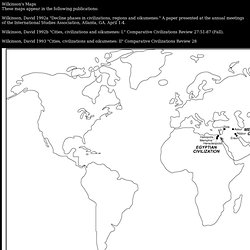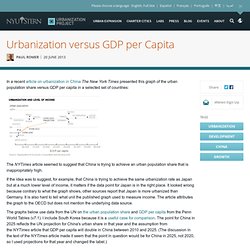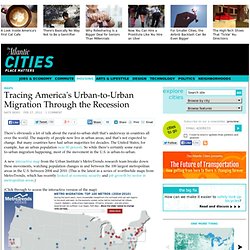

Welcome to Lagos. Mededeling: cookies. De Nederlandse Publieke Omroep is wettelijk verplicht toestemming te vragen voor het gebruik van cookies.

Als je deze eenmalig accepteert, dan zijn alle websites van de Publieke Omroep te bezoeken. Wij maken gebruik van functionele cookies en cookies voor het beheer van webstatistieken, advertenties en social media. Verstedelijking in Nederland. Coit Tower "Animal Force and Machine Force" Mural - San Francisco CA. San Francisco Mural Arts. Making Cities: de stad van de toekomst. The London Evolution Animation. De groei van de Grachtengordel / Expansion of Amsterdam in the Seventeenth Century.
Amsterdam.mp4. Uitgelicht, Groei van Amsterdam. Hier ziet u digitale presentaties die speciaal zijn gemaakt bij onze tentoonstellingen.

BBC Two - Filthy Cities, Industrial New York. Immigration Through Ellis Island - Award Winning Documentary Video Film. Map of New York City’s ethnic neighborhoods - Map. Population - New York City Department of City Planning. Lagos/Koolhaas // VPRO Eeuw van de stad. Law and Disorder in Lagos, Nigeria - Louis Theroux.
BBC Two - Welcome to Lagos. Lagos/Koolhaas (Dokwerk) vind je online op npo.nl. De Nederlandse Publieke Omroep maakt gebruik van cookies.

We maken een onderscheid tussen functionele cookies en cookies voor het beheer van webstatistieken, advertenties en social media. De cookies bevatten geen persoonsgegevens en zijn dus niet tot een individu te herleiden. Met de cookies voor advertenties en social media worden mogelijk door derden gegevens verzameld buiten de websites van de Nederlandse Publieke Omroep. Bij instellingen kun je aangeven deze cookies niet te accepteren.
Lagos-infrastructure-and-improvisation. IROWS: Wilkinson's Maps. Wilkinson's Maps These maps appear in the following publications: Wilkinson, David 1992a "Decline phases in civilizations, regions and oikumenes.

" A paper presented at the annual meetings of the International Studies Association, Atlanta, GA. April 1-4. Asia Topics in World History. The quickening of the economy in Song times fueled the .

Dozens of cities had 50,000 or more residents, and quite a few had more than 100,000. As in previous dynasties, the Song’s largest cities were its capitals — first in the North, then in the South. Both capitals are thought to have had about a million residents. (The population of London at the time was around 15,000). (1) Generic. Statistics on Poverty, Urbanization and Slums. Content 1.

Trends in urbanization2. Numbers of slum dwellers3. Urbanization versus GDP per Capita. In a recent article on urbanization in China The New York Times presented this graph of the urban population share versus GDP per capita in a selected set of countries: The NYTimes article seemed to suggest that China is trying to achieve an urban population share that is inappropriately high.

If the idea was to suggest, for example, that China is trying to achieve the same urbanization rate as Japan but at a much lower level of income, it matters if the data point for Japan is in the right place. It looked wrong because contrary to what the graph shows, other sources report that Japan is more urbanized than Germany. It is also hard to tell what unit the published graph used to measure income. The article attributes the graph to the OECD but does not mention the underlying data source. The Urban Revolution - Finance & Development, September 2007. Slum population in urban Africa. A Shocking Satellite Tour Of The World's Biggest Slums. Visualizing 200 Years of Urban Sprawl in Paris, São Paulo, and L.A. - Richard Florida. New animations show centuries of expansion in three global cities. Two centuries ago, Paris, a city with a population of half a million, barely extended beyond its medieval footprint.
São Paulo was still largely a small trading outpost for gold and exploration expeditions. And Los Angeles was just a pueblo of a few dozen buildings. Over the next 200 years, and accelerating rapidly during the second half of the twentieth century, this would all change. Today, the Paris metropolitan area sprawls out over more than 6,600 square miles, metropolitan São Paulo over more than 3,000 square miles, and metro L.A. over nearly 4,900 square miles.
A set of three new map animations from my colleagues at NYU's Stern Urbanization Project tracks the history behind these decades of geographic expansion. Take Paris, the oldest city featured in the visualizations. Northern Virginia Housing Development, Wallpaper, Download, Photos. Written by John G.

Mitchell The American Dream has long promised life, liberty, and the pursuit of a spacious, single-family home in the suburbs (with a pool, even). John Wagner Givens: The Greatest Migration: China's Urbanization. Part of the China by the Numbers Series There is no doubting the appeal of stories about average Chinese holding out for more compensation for their homes and farms by resorting to homemade rocket launchers and Kung Fu or nail houses that continue to stand in the middle of streets or giant pits.

Cities of Migration. Daily chart: Going to town. Tracing America's Urban-to-Urban Migration Through the Recession - Nate Berg. There’s obviously a lot of talk about the rural-to-urban shift that’s underway in countries all over the world.

The majority of people now live in urban areas, and that’s not expected to change. But many countries have had urban majorities for decades. The United States, for example, has an urban population near 80 percent. Global Rural-Urban Mapping Project (GRUMP), v1. Introduction Urbanization poses both challenges and opportunities for sustainable development and environmental management. Improved data on patterns of human settlement and trends in population can help researchers and policy makers better understand differences between urban and rural areas in terms of their impacts on the environment and vulnerability to environmental variability and change. The Global Rural-Urban Mapping Project, Version 1 (GRUMPv1) data collection is a valuable resource both for researchers studying human-environment interactions and for applied users working to address critical environmental and societal issues.
The urbanisation of Africa: Growth areas. Urbanization: A Majority in Cities: Population & Development. The world is undergoing the largest wave of urban growth in history. In 2008, for the first time in history, more than half of the world’s population will be living in towns and cities. By 2030 this number will swell to almost 5 billion, with urban growth concentrated in Africa and Asia. While mega-cities have captured much public attention, most of the new growth will occur in smaller towns and cities, which have fewer resources to respond to the magnitude of the change. In principle, cities offer a more favourable setting for the resolution of social and environmental problems than rural areas. Cities generate jobs and income. Cities also present opportunities for social mobilization and women’s empowerment.